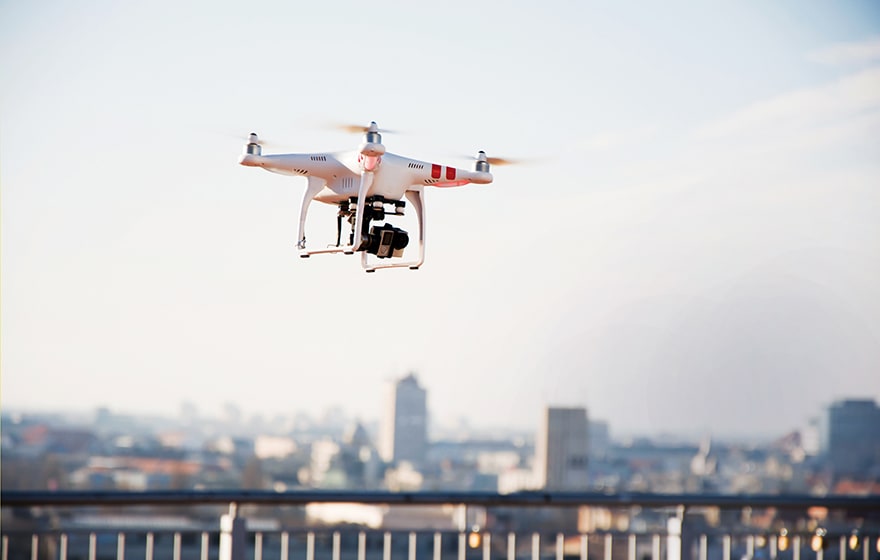The challenge for construction professionals using drones is to draw meaning from data they create, says Kenny Ingram, global industry director for construction at software vendor IFS.
The construction and asset management industry is leading the charge when it comes to the adoption of drone technology. Contractors, building surveyors and project managers are recognising the benefits drones can bring to the sector, including improved site survey efficiency using real-time images, and rapid data collection such as GPS recording and aerial imagery.
Drones will be able to monitor site progression and stockpiles, giving live updates on when certain materials need to be ordered in and delivered to site. The ability for construction companies to offer clients daily access to high-quality, real-time aerial footage during construction is an incredibly valuable service.
Drones can also contribute to improved health and safety thanks to more accurate and regular site inspections. If combined with BIM and enterprise software, the collected data can be beamed directly to the cloud or to end-point devices. Site anomalies will therefore be detected immediately and automatically flagged for further action.
In addition, by their nature drones reduce site congestion and can provide a safe and logistically sensible option for checking work at height or in spatially awkward or restrictive locations.
Read related articles
Drones: When does monitoring become spying?
UK construction adopts drones faster than any other sector
While such cases provide clear benefits throughout the construction process, construction companies are already burdened with information from many sources in a variety of formats. Unprocessed, real-time data that cannot be contextualised to provide valuable meaning therefore presents a challenge to these companies.
With digital transformation comes new opportunities and the Internet of Things is allowing construction companies to more competently deploy resources around a job site, minimise potential hazards and reduce costs.
However, companies require more integrated systems and processes to measure and evaluate the data, as well as deliver projects more efficiently.
This is where effective integrated project and asset lifecycle software comes in. With the right software tools, construction professionals can turn sensor data into 2D and 3D structural models, topographical maps, and volumetric measurements.

Are you making the most of drones on your projects? (Dreamstime)
Companies are now able to make use of visual processing algorithms that allow drones to collect and transmit information in real-time to a central application platform, resulting in safer and more efficient project execution. For example, this enables any hazards to be automatically identified and action taken to remove the risk.
Through connectivity with existing cloud platforms and other third-party discovery solutions, construction companies can connect to drones very easily and benefit from bespoke, agile management systems.
Most importantly, they can derive meaning from their data, which can be displayed across a variety of platforms to streamline efficiencies and deliver better business intelligence and project delivery.
Emerging technologies like drones are becoming more prominent in managing the construction and asset lifecycle process, and with companies becoming increasingly reliant on digital technologies, the need to manage the data collected from these technologies is becoming critical.
A more integrated business systems strategy is now becoming necessary so that the data is transmitted to an integrated and flexible project and asset lifecycle system.
Digital transformation is affecting every business, small to large, and the most successful enterprises know that their success hinges on the ability to work from these applications, as well as tapping into the value of the IoT to not only monitor and act on live updates, but help predict what happens next.
With drone adoption comes certain challenges, and if the industry continues to pioneer commercial drone usage then construction companies will need to showcase health and safety best practices, and implement the IoT to make best use of gathered data.
As such, companies should collaborate with specialists to not only help them digitally transform, but to streamline operational efficiency, trim costs and ensure they are getting the most out of their drone technologies.

Through connectivity with existing cloud platforms and other third-party discovery solutions, construction companies can connect to drones very easily and benefit from bespoke, agile management systems.– Kenny Ingram, IFS













